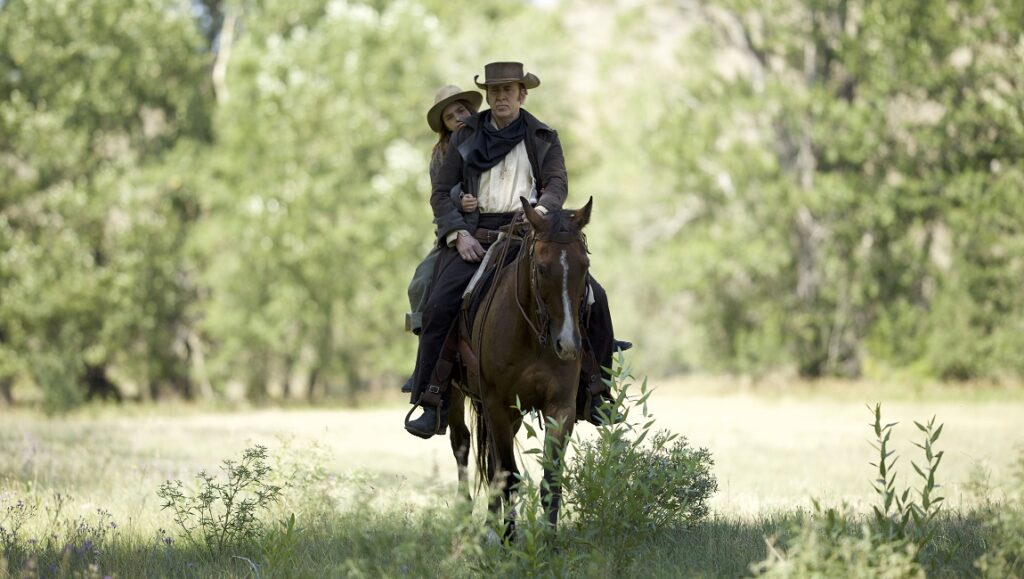Despite being arguably the popular genre of the classical era of Hollywood, the Western has faded over time into the background of mainstream cinema. The Old Way looks to revisit that throwback style of a bloody revenge tale, rife with horse riding and gun fighting, but it never much feels like a genuine Western. Thanks to an anonymous set design and too dry narrative, the film never realizes an immersive viewing experience, with its setting left to feel more like mere window dressing than a meaningful engagement with the genre.
Nicolas Cage (somehow starring in a Western for the first time, believe it or not) is Colton Briggs, an old-school gunslinger who has tried to bury his past and start a family. But as these things go, his new and peaceful existence is shattered when James McAllister (Noah Le Gros) — whose father was killed by Briggs twenty years prior — shows up at his house while he is away, killing his wife in an act of premeditated vengeance. For a moment, the film slows to revel in this pure horror, even lending the feel of something like Funny Games; but that tension is swiftly dissipated, and we’re swept back to the familiar narrative saddle. Briggs takes up the gun once more, only this time, his young daughter (Ryan Kiera Armstrong) joins him on his quest for retribution.
A generous reading might note that The Old Way’s tale of guilt and exorcising past demons can at times feel akin to something like Clint Eastwood’s Unforgiven, but while the always-game Cage is more than capable of imbuing some genuine pathos into his character, the final product lacks the emotional weight and necessary grit of finer Westerns. In fairness, repurposing recognizable narratives and tropes isn’t an uncommon approach to the Western construction, so the failure to build something novel here isn’t a flaw that necessarily weighs the film down. The bigger problem, then, is that The Old Way is too often just plain boring, with little drama or tension to drive the film forward or no distinctive personality to sell the material. It simply plods along to its obvious destination — the climactic showdown.
In addition to the film’s underwhelming action and largely stale dialogue, there’s the problem that McAllister simply isn’t an even remotely interesting villain. He is neither the cruel and ruthless sadist of so many yesteryear Westerns, nor is he a flawed but genuinely sympathetic character to which viewers can relate. Rather, he’s just a tired, cookie-cutter outlaw. Littered amongst all of this retread are moments of appealing stillness, respites where we glimpse human moments between father and daughter and where the film manages to deliver a few genuinely heartfelt scenes and sequences, but it’s simply not enough. Most of the time, viewers are left to ponder what a shame it is that, despite the resurgence of quality work Cage has been turning in for a while now, this was the best Western he could get his hands on.
Published as part of InRO Weekly — Volume 1, Issue 1.


Comments are closed.